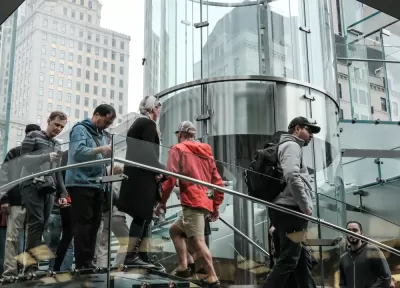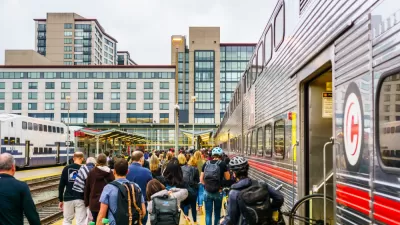The number of people commuting 20 minutes or more each way dropped by close to half a million, while short commutes rose slightly.

New data shows that the number of workers with long commutes (more than 20 minutes each way) in the Seattle area dropped sharply during the pandemic, while "the number of people with short commutes actually increased a little."
As reported by Gene Balk, Nielsen survey data shows "In the period from February 2020 to February 2021, about 318,000 workers age 21 and older in the Seattle metro area were not typically commuting," as compared with 125,000 in the prior year. "That pencils out to 193,000 fewer commuters just because of remote work. On top of that, the number of people in our area who were not employed, for whatever reason, increased by 74,000." In short, "100% of the net decline in commuting was due to those folks with commutes of 20 minutes or longer." Meanwhile, the number of short commutes, particularly those under ten minutes, increased slightly.
One explanation for this disparity is the correlation between average commute times and professions. "The data shows that, on average, people with shorter commutes are more likely to work jobs that could be categorized as 'blue collar' — and these were often jobs deemed essential during the pandemic (such as food service and grocery, transportation, delivery and retail)," jobs which typically do not have remote work options. "The data shows roughly half (49%) of the Seattle-area workforce with a job categorized as blue collar had a commute time of less than 20 minutes. In comparison, only about 37% of white-collar workers had commute times of less than 20 minutes."
FULL STORY: A quarter of a million long commutes disappeared during the pandemic in the Seattle area

Maui's Vacation Rental Debate Turns Ugly
Verbal attacks, misinformation campaigns and fistfights plague a high-stakes debate to convert thousands of vacation rentals into long-term housing.

Planetizen Federal Action Tracker
A weekly monitor of how Trump’s orders and actions are impacting planners and planning in America.

In Urban Planning, AI Prompting Could be the New Design Thinking
Creativity has long been key to great urban design. What if we see AI as our new creative partner?

Massachusetts Budget Helps Close MBTA Budget Gap
The budget signed by Gov. Maura Healey includes $470 million in MBTA funding for the next fiscal year.

Milwaukee Launches Vision Zero Plan
Seven years after the city signed its Complete Streets Policy, the city is doubling down on its efforts to eliminate traffic deaths.

Portland Raises Parking Fees to Pay for Street Maintenance
The city is struggling to bridge a massive budget gap at the Bureau of Transportation, which largely depleted its reserves during the Civd-19 pandemic.
Urban Design for Planners 1: Software Tools
This six-course series explores essential urban design concepts using open source software and equips planners with the tools they need to participate fully in the urban design process.
Planning for Universal Design
Learn the tools for implementing Universal Design in planning regulations.
Gallatin County Department of Planning & Community Development
Heyer Gruel & Associates PA
JM Goldson LLC
City of Camden Redevelopment Agency
City of Astoria
Transportation Research & Education Center (TREC) at Portland State University
Jefferson Parish Government
Camden Redevelopment Agency
City of Claremont





























